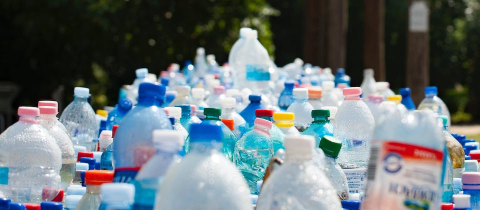A liner prevents the metal from reacting with the can’s contents. The concern is about bisphenol A (BPA), one of the components used to produce the epoxy resin, leaching out into the food or beverage in the can. BPA has been classified as an “endocrine disruptor,” in other words, a substance that has hormone-like activity. Once BPA has been incorporated into the polymer it no longer has any hormonal effects, but there are always traces of unreacted BPA leftover that can indeed leach out. Before exploring this issue, a bit of history is in order.
Napoleon, as many other generals before him, discovered that soldiers do not fight well on empty stomachs. And stomachs were often empty due to the difficulty of supplying food to massive travelling armies. So, the Emperor offered a prize of 12,000 Francs, a healthy amount of money at the time, to anyone who could come up with a viable method of preserving food.
This challenge was taken up by Nicholas Appert, the son of an innkeeper who had learned about brewing and pickling. These “fermentation” methods he knew could be halted by heat, and he began to wonder if food spoilage could also be stopped in this fashion. After all, it was clear that cooked food kept longer than fresh food, although eventually it too would spoil. Years of experimentation led Appert to make a critical discovery. If the food were sealed in a glass jar and then heated, it would keep for a remarkably long time. Long enough to please Napoleon, who awarded the prize to Appert in 1809. The method clearly worked, although nobody at the time understood why. Bacteria were not identified as the cause of food spoilage until another famous Frenchman, Louis Pasteur, came along later in the century.
Appert’s invention came to the attention of Peter Durand in England who was troubled by the use of glass jars that often broke. There had to be a better way! Why not a metal container? Iron was cheap and was the first choice. But it corroded, especially when exposed to acidic foods. A coating that would protect it from the air and contents had to be found. Tin, concluded Durand, would do the job! The metal had been known since antiquity and could be easily melted and applied as a coating to iron to make tin plate. And most importantly, tin did not corrode. By 1818, the British Company Donkin and Hall was mass-producing food in tin cans. When Admiral Parry sailed to the Arctic Circle in 1824 he sustained his crew on canned food. One can of roast veal apparently was not consumed because it turned up in a museum 114 years later. Inquisitive scientists opened it and decided to check the effectiveness of the canning process. They were not quite brave enough to try the veal themselves, but the rats and cats that had the pleasure of partaking of the 114-year-old feast not only survived, but thrived!
Although tin did not corrode, small amounts did dissolve resulting in tainted food. This also meant the possibility of forming microscopic holes through which bacteria could enter and undermine the canning process. Aluminum eventually turned out to be more suitable for cans but still presented the problem of the metal interacting with the food. Chemists now stepped into the picture and found that an epoxy resin made by reacting bisphenol A with epichlorohydrin was excellent for providing a barrier that was stable under the high heat and pressure of sterilization, did not crack if the can was dented, and stood up well to the varying acidity of different foods.
Epoxy resins performed admirably, but cracks, figuratively speaking, began to appear in the early 1990s. By then analytical techniques had been developed to detect extremely small amounts of BPA, and more importantly, the hormonal effects of this chemical were being demonstrated by its effects on the multiplication of cultured breast cancer cells. In 1995 researchers at the University of Granada in Spain investigated a number of canned foods and found estrogenic activity in peas, artichokes, green beans, corn and mushrooms but not in asparagus, palm hearts, peppers or tomatoes. The authors pointed out that while an estrogenic effect was observed, it was far less than that observed for estradiol, the body’s naturally occurring estrogen.
The significance of the estrogenic effect of canned foods is difficult to estimate given that on top of the estrogen produced by the body we are exposed to a wide variety of natural estrogenic compounds found in foods that include milk, chick peas, soybeans, vegetable oils, cabbage, flax seeds and oats. It should also be noted that the concentration of pure bisphenol A required to produce maximum proliferation of breast cancer cells in the laboratory is 1000 fold greater than for estradiol.
Even though no risk from traces of BPA in canned foods has been demonstrated, there is clamour for invoking the “precautionary principle” which aims to prevent harm even when the evidence is not fully in. For food companies pleasing consumers is a high priority, whether consumers’ demands are justified or not. Most manufacturers have switched to polyesters, acrylics or ceramics to line cans and the use of bisphenols with a modified molecular structure is being explored. Canned beverage producers are still struggling to come up with an adequate replacement for epoxy resins.
And one more thing. While you’ve been reading this little piece, hundreds of people have died from hunger, lack of clean water, poor sanitation and a host of preventable diseases ranging from malaria to AIDS. By contrast, we have the luxury of worrying about traces of chemicals contaminating our ample food supply.







